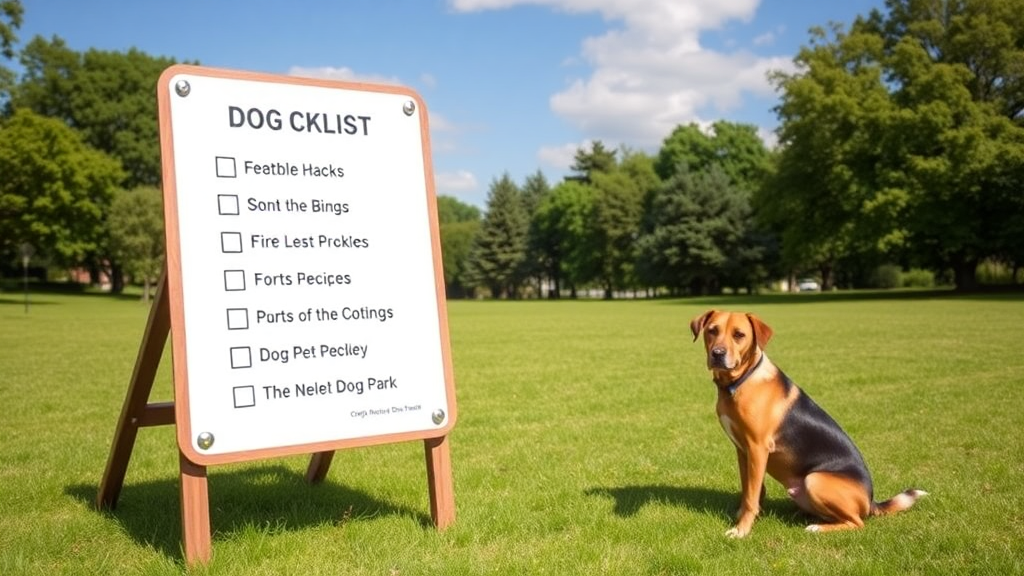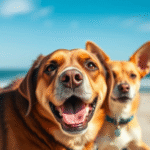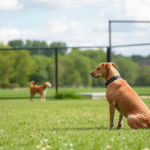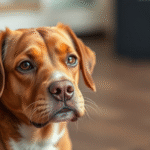What’s on My Personal Dog Park Checklist: Essential Items for a Fun Day
When you plan a day out at the dog park, preparation is key to ensuring both you and your furry friend have a fantastic time. Having a personal dog park checklist helps you gather essential items that contribute to a fun, relaxing, and safe experience. Below is a well-rounded list of items you should consider bringing along.
Basic Supplies
Before heading to the park, make sure you pack the basics. These items keep your dog safe and comfortable while enjoying the outdoors.
- Leash and Collar: Always have a sturdy leash and a comfortable collar with your dog’s ID tags. It’s important for safety and identification.
- Dog Waste Bags: Don’t forget to pick up after your dog. Carry enough waste bags to clean up without stress.
- Water and Bowl: Hydration is crucial. Bring fresh water and a portable bowl to keep your pup hydrated during play.
- Treats: Use treats as a reward for good behavior or as incentives for training during your outing.
Playtime Essentials
Make your park visit more enjoyable by including a few fun playtime essentials. These encourage your dog to socialize and exercise.
- Dog Toys: Pack a couple of your dog’s favorite toys, such as a ball, frisbee, or tug rope. These items can stimulate play and keep your dog entertained.
- Interactive Toys: Consider bringing toys that challenge your dog mentally, like puzzle feeders, to engage their minds.
- Ball Launcher: If your dog loves to fetch, a ball launcher can keep the fun going without wearing you out.
Comfort and Hygiene
Your dog’s comfort is important during a dog park outing. Make sure you have items to keep them clean and comfy.
- Dog Blanket or Towel: Use a blanket to create a comfortable resting spot, or a towel to wipe off any mud or water after play.
- Grooming Supplies: Bring a brush and wipes to clean off dirt and debris from your dog’s coat.
- Dog Booties: If it’s hot or cold outside, consider using dog booties to protect your dog’s paws from harsh surfaces.
Health and Safety
Your dog’s health and safety should always be your top priority. Here are items to remember for this aspect.
- First Aid Kit: Having a dog-specific first aid kit can be a lifesaver in case of minor injuries.
- Dog Sunscreen: If you’re visiting the park on a sunny day, consider applying dog-safe sunscreen to prevent sunburn.
- Monitor Weather Conditions: Always check the weather before heading out. Bring gear for rain, such as a raincoat, or a sun hat for sunny days.
For You Too
Don’t forget about your own comfort and enjoyment. Including a few items for yourself can help both you and your pup enjoy the day more fully.
- Comfortable Shoes: Wear shoes that are ideal for walking and can handle various terrains.
- Sunscreen and Hat: Protect yourself from the sun, just as you would for your dog.
- Water Bottle: Stay hydrated by bringing your own water bottle.
- Book or Music: Bring a book or headphones for downtime while your dog plays.
By checking off these essential items from your personal dog park checklist, you’re setting the stage for a successful outing. Not only will you have everything needed for a day of fun, but you’ll also promote a safe and enjoyable environment for your dog.
For more tips on dog park etiquette and activities, consider visiting the AKC for insightful information. Or check out Chewy for pet supplies and products that can enhance your dog park experience.
Enjoy your time at the dog park and watch your furry friend flourish in the great outdoors! Keeping this checklist in hand will ensure no essential items are left behind.
Safety Tips for Visiting the Dog Park
Visiting a dog park can be a delightful outing for both you and your furry friend. However, ensuring safety while you’re there is crucial. Here are essential safety tips that will help create a positive experience for you and your pet.
Know the Park Rules
Before you enter the park, familiarize yourself with its specific rules. Different parks may have different regulations regarding leash policies, age restrictions, and dog behavior. This will help you avoid misunderstandings or unwanted incidents.
Assess Your Dog’s Behavior
It’s important to gauge whether your dog is suited for a dog park experience. Consider the following:
- Socialization: Is your dog friendly with other dogs and people?
- Training: Does your dog respond well to commands?
- Temperament: How does your dog react to other dogs, especially if they are overly aggressive or overly timid?
Bring Essential Supplies
Make your visit more pleasant by packing some must-have items:
- Water and a portable bowl to keep your dog hydrated.
- Waste bags for cleaning up after your dog.
- A first aid kit for both you and your pet in case of minor injuries.
- Dog treats to reward your pooch for good behavior.
Watch for Signs of Stress
Always be observant of your dog’s body language. Signs of stress can include:
- Excessive barking or whining
- A tucked tail or a lowered head
- Avoiding other dogs or hiding
If you notice any of these behaviors, it might be time to take a break or leave the park.
Supervise Your Dog
Vigilance is key. Always keep a close eye on your dog while they’re interacting with others. This will help you intervene if play gets too rough or if another dog seems aggressive. It’s your responsibility to ensure your pet is safe and comfortable.
Be Mindful of Other Dog Owners
Respect other dog owners and their pets. Always ask for permission before letting your dog approach someone else’s dog. Not all dogs are socialized, and some may react unfavorably if approached directly.
Limit the Freestyle Playtime
While the dog park is a great place to let your pet roam, try to set boundaries. Limit the time your dog spends off-leash, especially if they are not used to it. Keeping them on a leash or in a controlled space can prevent unwanted incidents.
Be Aware of Health Risks
Dog parks can be breeding grounds for certain infections. Make sure your dog is up-to-date on vaccinations such as:
- Rabies
- Parvo
- Bordetella (Kennel Cough)
Regular vet visits can help ensure your pet is protected from common health risks found in public dog areas.
Limit Visits to Off-Peak Hours
If possible, visit the dog park during off-peak hours. This is particularly beneficial if your dog is shy or is not used to large groups. Fewer dogs can mean a more relaxed atmosphere and less risk of conflict.
Emergency Preparedness
Always have a plan for emergencies. Know where the nearest veterinarian is located and keep their contact information handy. You can also consider joining local dog groups where you can share experiences and learn from others.
FAQs
Here are some common questions that dog owners may have regarding dog parks:
| Question | Answer |
|---|---|
| Can unneutered dogs go to dog parks? | It’s generally not recommended as unneutered males may display aggressive behavior. |
| What should I do if a dog fights? | Stay calm and try to separate the dogs using a loud noise while avoiding direct contact. |
Visiting the dog park can be a rewarding experience when done with care and responsibility. By following these safety tips, you can ensure your dog has a fun and secure outing. Always prioritize your pet’s safety and comfort while enjoying the park’s offerings.
For more detailed information on dog behavior and best practices, consider checking out resources from The American Kennel Club or PAWS.
Choosing the Right Dog Park for Your Pet
When the weather is nice and your furry friend is bursting with energy, a dog park can be a perfect outing. However, choosing the right one is important for your pet’s safety, socialization, and fun. Here are some key factors to consider when selecting the ideal dog park.
Location and Accessibility
First, think about how far you’re willing to travel. A location that’s too far away may discourage you from visiting regularly. If you can find a park that’s close to your home or workplace, it will make spontaneous visits easier. Also, consider whether the park is easy to access with parking available nearby.
Size and Space
The size of the dog park can greatly impact your pet’s experience. Here are some aspects to watch for:
- Area Size: Ensure the park has enough space for dogs to run and play without restrictions.
- Separate Areas: Look for a park that offers separate sections for small and large dogs. This ensures that smaller breeds feel safe and can play without fear of larger dogs.
Safety Features
Safety is a top priority when selecting a dog park. Make sure to evaluate the following:
- Fencing: The park should have sturdy fencing that prevents dogs from escaping.
- Double Gates: A double-gated entry system can effectively keep dogs from bolting out when entering or leaving the park.
- Ground Surface: Check if the ground is smooth and free of debris that might hurt your pet’s paws.
Facilities Available
Having certain facilities can enhance your visit. Consider these features:
- Water Stations: Look for parks that offer water fountains specifically for dogs, keeping them well-hydrated.
- Seating: Benches or shaded areas for pet owners can make your visit more comfortable.
- Waste Stations: Proper waste disposal stations ensure cleanliness and hygiene in the park.
Community Interaction
Another factor to consider is the community of dog owners frequenting the park. A friendly atmosphere can make your visits more enjoyable. Observe how pet owners interact with each other and their dogs. An inviting community can be encouraging for both you and your pet.
Park Hours and Regulations
Check the park’s hours of operation. Some parks have specific hours for small dogs or designated playgroups, so it’s crucial to know these details ahead of time. Familiarize yourself with the park’s rules, as this will help ensure a safe and pleasant experience for all.
Special Events and Activities
Some dog parks host special events or activities that can enhance your pet’s socialization. Look for parks that organize:
- Dog Training Sessions: These can help reinforce good manners and obedience.
- Social Gatherings: Regular meet-ups among dog owners can foster community bonds.
- Events: Look for fun contests or seasonal events that add excitement to your visits.
Online Reviews and Recommendations
Before making a final decision, research the park online. Websites like Rover offer useful checklists and community reviews. Engaging in local pet-focused social media groups can also provide recommendations and feedback from other dog owners to help you navigate your options.
| Feature | Pros | Cons |
|---|---|---|
| Location | Easy to access | May be crowded |
| Size | Room for play | Smaller dogs may feel intimidated |
| Facilities | Enhanced experience | Some parks may lack these |
| Community | Friendly environment | Not all communities are welcoming |
By taking these factors into account, you can choose the right dog park that aligns with your pet’s needs, ensuring both fun and safety during your visits. Your furry companion deserves the best possible experience in a space designed for their enjoyment, so do a little research and choose wisely! For more helpful tips and resources, visit Dog Park.
Socializing Your Dog in a Park Setting
Socializing your dog in a park setting can significantly enhance their behavior and overall happiness. It provides a unique environment for dogs to interact with other pups and people, ultimately leading to better social skills. However, it’s essential to approach this experience correctly to ensure safety and enjoyment for both your pet and others. Here are some important aspects to consider when socializing your dog in a park.
Understand Your Dog’s Temperament
Before heading to the park, it’s important to understand your dog’s personality. Some dogs thrive in social settings, while others may feel anxious or overwhelmed. Take note of the following:
- Friendly and Sociable: If your dog is naturally friendly, they may enjoy meeting new friends.
- Shy or Anxious: If your dog shows signs of fear, try to ensure a gradual introduction to new dogs and people.
- Aggressive Behavior: If aggression is a concern, seek professional advice or training before socializing.
Choose the Right Time to Visit
The time of your visit can greatly impact your dog’s experience. Opt for less crowded hours, especially if your dog is still adjusting to socialization. Early mornings or late afternoons are usually quieter. During peak hours, your dog may feel overwhelmed by the number of other dogs and people around.
Make a Socialization Checklist
Before you head out, make a checklist to ensure you are fully prepared for your park visit. Here’s an example of what to include:
- Leash and Collar: A sturdy leash and collar are essential for controlling your dog, especially in new environments.
- Doggy Waste Bags: Clean up after your pet to maintain hygiene in the park.
- Water Bottle: Keep your dog hydrated, especially on warm days.
- Treats: Use treats to reward good behavior and encourage positive interactions.
- First Aid Kit: Essential for emergencies or minor injuries.
Use Positive Reinforcement
When socializing your dog, positive reinforcement can work wonders. Reward your pet with treats or praise whenever they interact calmly with other dogs or people. This technique encourages your dog to associate social encounters with positive feelings, making them more inclined to repeat the behavior.
Observe Dog Body Language
Understanding dog body language is vital during park visits. Look for signs of comfort and anxiety in both your dog and others. Here are some key signals to recognize:
- Relaxed Tail Position: Indicates a happy and comfortable dog.
- Baring Teeth or Growling: Signs that a dog may not want to interact.
- Crouched Body: Often means a dog is scared or anxious.
Set Boundaries and Rules
Establish clear boundaries for your dog. Teach them commands like “leave it” or “come” to manage their behavior effectively. Be sure they’re familiar with basic obedience commands before venturing out to the park. If another dog approaches and you feel it may not be a safe encounter, you can guide your dog away using these commands.
Meet Other Dogs Gradually
If your dog is new to the park, meet unfamiliar dogs gradually. Start with friendly, non-aggressive dogs to ease your dog into social settings. Allow them to sniff each other while keeping a safe distance. You can gradually decrease this distance as they show comfort.
Utilize Park Resources
Many dog parks offer specific areas for different sizes or types of dogs. Take advantage of these spaces to ensure safety. Smaller or less confident dogs may feel more comfortable in an area designated just for them.
For more information about socializing your dog successfully, you can check out resources at American Kennel Club and Dog Training Nation for valuable advice on dog behavior and training.
Socializing your dog at the park is not just about letting them run free; it’s a chance for you to engage in their growth. Patience and understanding will make this experience enjoyable for both you and your pet. Remember, the goal is to create positive experiences, paving the way for a well-adjusted, social canine companion!
The Importance of Dog Park Etiquette
Visiting a dog park can be a joyful experience for you and your furry friend. However, ensuring that everyone enjoys their time requires a shared understanding of dog park etiquette. This etiquette creates a welcoming environment, minimizes conflicts, and promotes positive interactions among dogs and their owners. Here’s what you should keep in mind to enhance the experience for all involved.
Know the Rules of the Dog Park
Before entering any dog park, take a moment to read the posted rules. Most parks have specific guidelines that help keep dogs safe and allow for a pleasant visit. Common rules may include:
- No aggressive dogs allowed
- All dogs must be up-to-date on vaccinations
- Owners must pick up after their pets
- Leashes are typically required at the park’s entrance and exit
Familiarizing yourself with these rules helps keep your dog safe and ensures a enjoyable time for everyone.
Keep a Close Eye on Your Dog
It’s essential to supervise your dog at all times while at the park. Each dog has a unique personality, and their interactions can lead to unpredictable situations. Here’s why you should actively monitor your dog:
- To prevent aggressive play or potential fights
- To ensure your dog doesn’t run off or chase after other animals
- To watch for any signs of stress or discomfort in your dog or others
Being attentive helps you intervene before a situation escalates.
Bring the Right Gear
Equipping yourself with the right gear can vastly improve your dog park experience. Essential items include:
- A leash and collar
- A dog waste bag dispenser
- Water and a collapsible bowl
- A first aid kit for minor injuries
Having these items on hand shows consideration for your dog and other park users. Remember to bring extra waste bags to help keep the park clean.
Socialize Responsible
Allowing dogs to interact plays a key role in their development. However, it’s vital to facilitate responsible socializing. Here are some tips:
- Wait for other dogs and their owners to signal that they are open to interaction
- Avoid forcing your dog to interact if they seem unsure or anxious
- Observe how dogs greet each other; playful posture is a good indicator
Encouraging safe interactions can help reduce stress, making playtime enjoyable for everyone.
Be Considerate to Other Owners
Your actions as a dog owner impact others in the park. Consider these points when interacting with fellow park-goers:
- Be approachable and polite when discussing any concerns
- Respect the space of others, especially if they have a timid dog
- Share any information about your dog, especially if they have unique tendencies
Building positive relationships with fellow dog owners contributes to a friendly atmosphere.
Properly Socializing Puppies
If you have a young puppy, exposing them to various situations is invaluable. Socializing them at the park ensures they learn appropriate behaviors. Factors to keep in mind:
| Aspect | Importance |
|---|---|
| Exposure to Different Dogs | Helps puppies learn how to interact with various breeds and temperaments. |
| Playing with Other Puppies | Encourages healthy play and teaches them to read dog body language. |
| Learning to Be Well-Behaved | Encounters with well-behaved dogs can set good examples for your puppy. |
Taking these extra steps in puppy development results in a well-balanced dog.
Share Your Knowledge
Get involved in your local dog park community. Sharing experiences and knowledge about dog care can enhance awareness among all dog owners. Engaging in discussions can lead to different insights about keeping dogs happy and healthy. Follow AKC for more dog etiquette tips and resources to help build a vibrant dog park experience.
Implementing proper etiquette at the dog park creates a safer, happier space for all. By following these guidelines, you’re contributing to a friendly environment where dogs can play and socialize without worry while you enjoy a pleasant day out together.
Seasonal Considerations for Dog Park Visits
Every dog owner knows the joy of taking their furry friends to the dog park. However, seasonal conditions can significantly impact your visits, from the activities you can engage in to the health and safety of your pet. Understanding what to consider during different seasons can help you prepare for a visit and keep your dog safe and happy.
Spring: Awakening Adventures
As the cold weather fades, spring ushers in a vibrant atmosphere. Here are some key considerations for spring visits:
- Allergies: Spring is notorious for pollen. If your dog suffers from allergies, consider consulting your vet for suitable medications.
- Check the Ground: After winter, areas may still be muddy or wet. Look out for puddles which can lead to dirt-filled paws and potential discomfort.
- Emerging Wildlife: Spring is a time for active wildlife. Make sure your dog is on a leash if needed, especially around nesting birds or newborn animals.
Summer: Fun in the Sun
With summer comes longer days and plenty of sunshine. However, this season also poses some challenges:
- Heat Risks: Dogs can overheat quickly. Ensure that your dog has access to shade and fresh water. Consider visiting the park during cooler parts of the day, such as early morning or late evening.
- Paw Care: Hot pavement can burn your dog’s paws. Test the ground with your hand; if it’s too hot for you, it’s too hot for them!
- Flea and Tick Prevention: Summer is peak season for fleas and ticks. Use preventative treatments regularly and check your dog for pests after park visits. Learn more about prevention at [The American Kennel Club](https://www.akc.org) (opens in a new window).
Fall: A Colorful Retreat
As leaves turn and temperatures drop, fall offers a beautiful experience. Here’s what to keep in mind:
- Temperature Adjustments: Fall weather is often cooler but can still have warm days. Ensure your dog is comfortable, especially if they have a thicker coat.
- Fallen Leaves: While playing in leaves can be fun, watch for moldy leaves that can be harmful if ingested. Always supervise your dog closely.
- Dehydration Awareness: Even as temperatures drop, dogs can still get dehydrated. Always carry water and be conscious of your dog’s hydration levels.
Winter: Cold Weather Caution
Winter can be a challenging time for dog park enthusiasts. Here’s how to adapt:
- Coat and Booties: Depending on your dog’s breed, a coat or booties may be necessary. Protecting their paws from ice and salt is crucial.
- Shorter Visits: Limit time outdoors if temperatures drop too low. Watch for signs of discomfort—like shivering or reluctance to walk.
- Snow Playtime: Dogs enjoy snow, but be cautious of ingestion. Ensure your dog doesn’t consume snow or ice that’s been contaminated with chemicals.
General Tips for All Seasons
No matter the season, here are some general tips to ensure enjoyable and safe dog park trips:
- Health Checks: Regular vet check-ups ensure your dog is fit and up-to-date on vaccinations.
- Pack Essentials: Always bring water, toys, and any necessary medications to the park. Think about snacks to reward good behavior.
- Socialization: Each season offers unique socialization opportunities. Whether it’s playing in the snow or running through fallen leaves, engage with other dogs and pet owners.
Understanding seasonal conditions can help you create a safe and enjoyable experience for you and your furry companion. For more detailed information on dog care and safety, visit the American Kennel Club for expert advice.
Your best friend deserves to enjoy all that the great outdoors has to offer, no matter the season. By paying attention to these seasonal considerations, you can ensure that each visit to the dog park is a fun and safe adventure!
Engaging Activities to Enjoy at the Dog Park
Taking your furry friend to the dog park is one of the best ways to enjoy the great outdoors together. It’s not only a chance for dogs to socialize but also an opportunity for you to engage in fun activities that promote their well-being. Here are some exciting activities you can do at the dog park to make the most of your time with your pet.
Agility Courses
Many dog parks feature agility courses full of obstacles. These courses may include tunnels, jumps, and weave poles, providing a fantastic way for your dog to channel their energy. Here’s how to get started:
- Allow your dog to explore the equipment safely.
- Encourage them with treats or their favorite toy.
- Run through the course together to show them how to navigate it.
This activity not only stimulates your dog physically but mentally as well, helping them build confidence.
Fetch and Retrieve Games
One of the simplest and most enjoyable activities at the dog park is a classic game of fetch. You can make it more exciting by:
- Using a ball launcher to throw the toy farther.
- Hiding toys around the park for treasure hunts.
- different types of toys, such as frisbees or soft balls.
These variations keep your dog engaged and encourage them to run freely, which is great for their health.
Socialization and Playdates
The dog park is a perfect place to let your dog socialize with other dogs. To help your dog learn better social skills, consider these tips:
- Observe how your dog interacts with others and stay nearby to offer assistance if needed.
- Encourage friendly play by joining in, tossing toys around, or participating in chase games.
- Schedule regular playdates with other dog owners to help your dog form lasting friendships.
Strong social bonds are essential for your dog’s emotional health.
Training Sessions
A dog park isn’t just for play; it can also be an excellent venue for training. Consider these activities:
- Practice basic obedience commands such as sit, stay, and come in a distracting environment.
- Introduce new tricks, like roll over or play dead.
- Use positive reinforcement techniques, rewarding good behavior with treats.
Training in a park setting helps your dog learn to focus despite distractions, enriching their behavior.
Cooling Off Activities
On hot days, ensure your pup stays cool with these fun activities:
- Find a dog-friendly splash pad where they can enjoy water play.
- Bring along a kiddie pool filled with water and let your dog splash around.
- Set a time for some gentle activities in the shade, like light fetch or tug-of-war with a damp toy.
Keeping your dog hydrated and cool is essential for their health and comfort.
Dog Park Etiquette
To ensure that everyone has a good time at the dog park, it’s important to follow some basic etiquette:
- Always supervise your dog and intervene if play gets rough.
- Pick up after your pet and dispose of waste properly.
- Respect other dogs’ spaces and let them approach each other at their own pace.
These guidelines create a pleasant environment for all dogs and their owners.
Engaging in these activities at the dog park not only keeps your dog active but also strengthens the bond you share. For more tips on excitable dog activities, visit American Kennel Club or explore community resources at Dog Park.
Key Takeaway:
When it comes to making the most of your visits to the dog park, having a solid checklist can enhance your experience significantly. First and foremost, ensure that you are equipped with essential items for a fun day. Bring along your dog’s favorite toys, a portable water bowl, and waste bags. These are must-haves to keep your furry friend comfortable and happy while enjoying playtime.
Safety is a top priority at any dog park. Pay attention to safety tips such as keeping your dog updated on vaccinations and ensuring they are well-socialized before visiting. This helps create a safe environment for all pets and their owners. Additionally, choosing the right dog park is crucial. Look for a facility that is well-maintained, appropriately fenced, and has separate areas for small and large dogs.
Socialization plays a significant role in your dog’s development, and the park offers an excellent chance to socialize. Allowing your pet to play with other well-mannered dogs can build their confidence and help improve their behavior. However, it’s essential to understand dog park etiquette; always supervise your dog, respect leash rules, and clean up after your pet. Proper dog park etiquette fosters a friendly atmosphere and ensures everyone enjoys their time.
Seasonal considerations are also important. Depending on the weather, you may need to alter your plans. In hot months, opt for shaded areas and carry enough water. Conversely, in winter, ensure your dog is warm and comfortable.
Consider engaging activities to maximize your dog’s enjoyment. From agility courses to just playing fetch, these activities can keep your dog active and engaged. In short, a successful visit to the dog park requires thoughtful preparation, consideration for safety, adherence to etiquette, and awareness of seasonal conditions, along with fun activities that keep both you and your dog happy!
Conclusion
To wrap up, having a well-prepared checklist for your dog park outings can make all the difference for you and your furry friend. By including essential items, such as fresh water, waste bags, and toys, you’ll ensure that your day is filled with fun and adventure. Remember that safety is paramount, so be mindful of any specific park rules and the behavior of other dogs while visiting.
Choosing the right dog park requires considering your pet’s personality and needs, leading to better socialization opportunities. Engaging with other dogs and owners in a friendly manner enhances your pet’s experience while reinforcing good behavior. Practicing proper dog park etiquette further fosters a positive environment for everyone involved.
Seasonal considerations, like keeping your pet cool during hot months or checking for hazards in winter, will guarantee that your dog remains safe throughout the year. don’t forget to introduce engaging activities to keep your dog stimulated and active during your visits. From fetch to agility exercises, the possibilities are endless.
By thoughtfully preparing for your trips to the dog park, you can create memorable experiences that strengthen your bond with your dog. Embrace the joys of the dog park, and enjoy the benefits of socialization, exercise, and fun that every visit brings. Happy adventuring!







Leave a Reply